

Humberside Geologist no 16
The distribution of some indicator glacial erratics in eastern Yorkshire
By Mike Horne*
Read at a meeting of the Yorkshire Geological and Hull Geological Societies in
Hull in January 2005
The Hull Geological Society revived the East Riding Boulder Committee in 1987 as
a contribution to its Centenary activities in 1988 (Harrison and Horne 1992) and
has continued to record the various glacial erratics and their location. It is
an activity that all members can become involved with and contribute their
findings. The data collected has been published in its journal
Humberside Geologist.
When one starts paying attention to the erratics it becomes obvious that some
rocks are endemic to the whole area, such as yellow quartz pebbles, whereas some are
rarer and seem to have distinct distributions and others are very scarce. The
identification of the erratics can be subjective and could be more refined
scientifically (Horne 2021). This paper will look at some of the distinctive
erratics and consider their distribution; it is mostly based on their occurrence
as pebbles on the beaches of Holderness and coastal exposures.
The erratics selected for this report are –
Larvikite – a dark coarse grained igneous rock
from southern Norway; the large feldspar crystals give off a blue
interference colour.
Rhomb Porphyry – large pale crystals in a fine
grained reddish purple matrix from southern Norway.
Green Conglomerate – well rounded clasts of quartz
and rock fragments in a fine grained green matrix probably from the Ingleton
area.
Tilberthwiate Tuff – a green slate from the
southern Lake District.
Brockram – a Permian breccia of large clasts of
grey limestone in a pale red matrix from the Appleby area.
Cheviot Porphyry – medium sized phenocrysts in a
black, brown or reddish matrix; these erratics are shiny as if they have
been polished.
Cannon Ball Limestone – a buff limestone made of
large spherical concretions of Permian age from the Sunderland area.
Gryphaea
– the “Devil’s Toenail” oyster from the early Jurassic of North Yorkshire
and offshore exposures in the bed of the North Sea during periods of low sea
levels.
“Lias” – a grey shelly limestone from the early
Jurassic of North Yorkshire and offshore exposures.
Kimmeridge Clay – a dark shale from the late
Jurassic, sometimes containing distinctive crushed ammonites. This rock is
exposed in Filey Bay and also occurs in the Vale of Pickering, but the
erratics probably also came from the bed of the North Sea.
Speeton Clay – fossils and nodules from the early
Cretaceous. This rock is exposed in Filey Bay and also occurs on the norther
edge of the Yorkshire Wolds, but the erratics probably also came from the
bed of the North Sea.
Black Flint – black flints from the latest
Cretaceous (not found in the onshore Yorkshire Chalk).
Belemnitella mucronata – a distinctive butterscotch coloured belemnite
from the latest Cretaceous (not found in the onshore Yorkshire Chalk).
On the maps a red dot indicates a record of the erratic. The size of the dot is
not an indicator of abundance. The erratics were mostly noted from occurrences
on beaches, rather than in situ in
cliffs or beach exposures of the tills. The purple stars indicate exposures of
the source rocks on the Yorkshire coast.

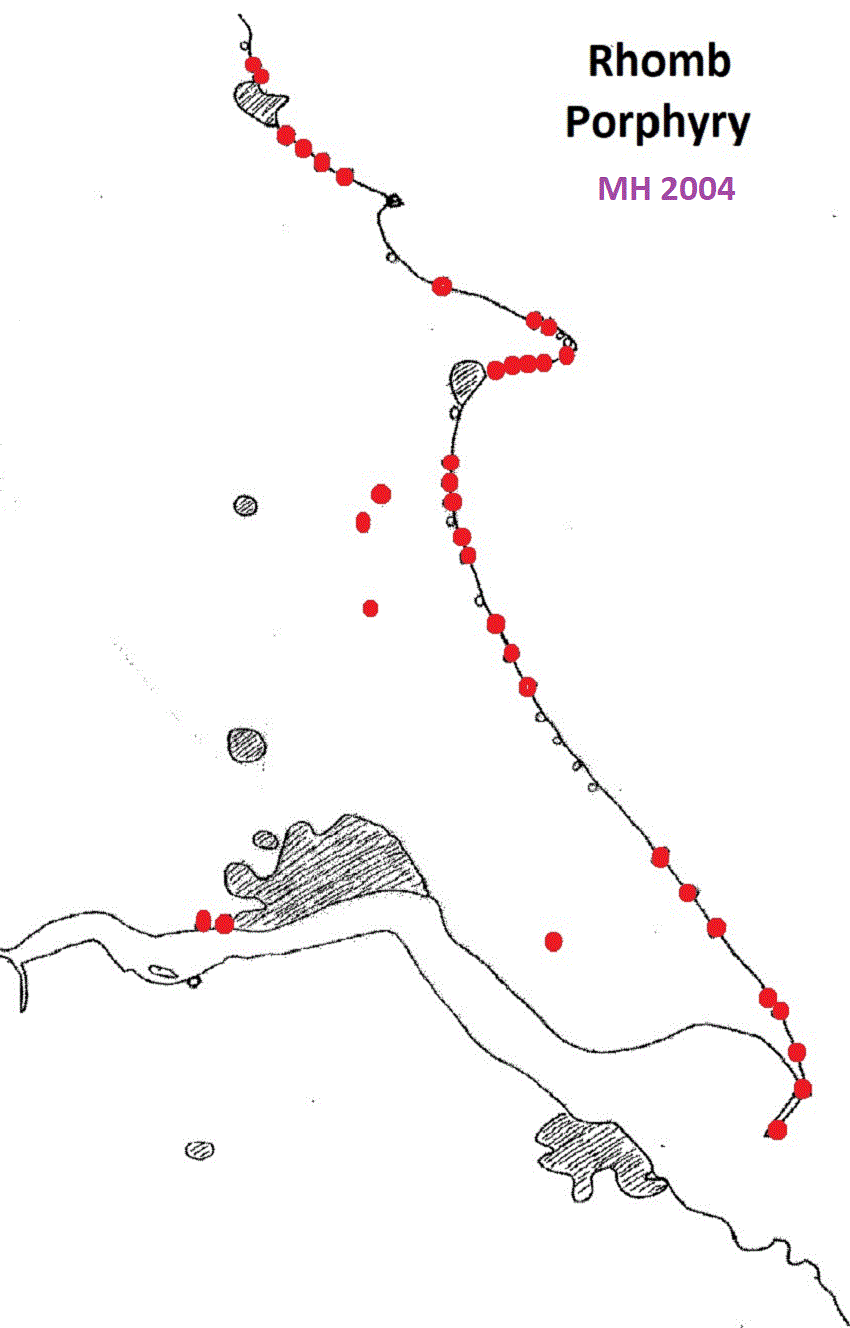
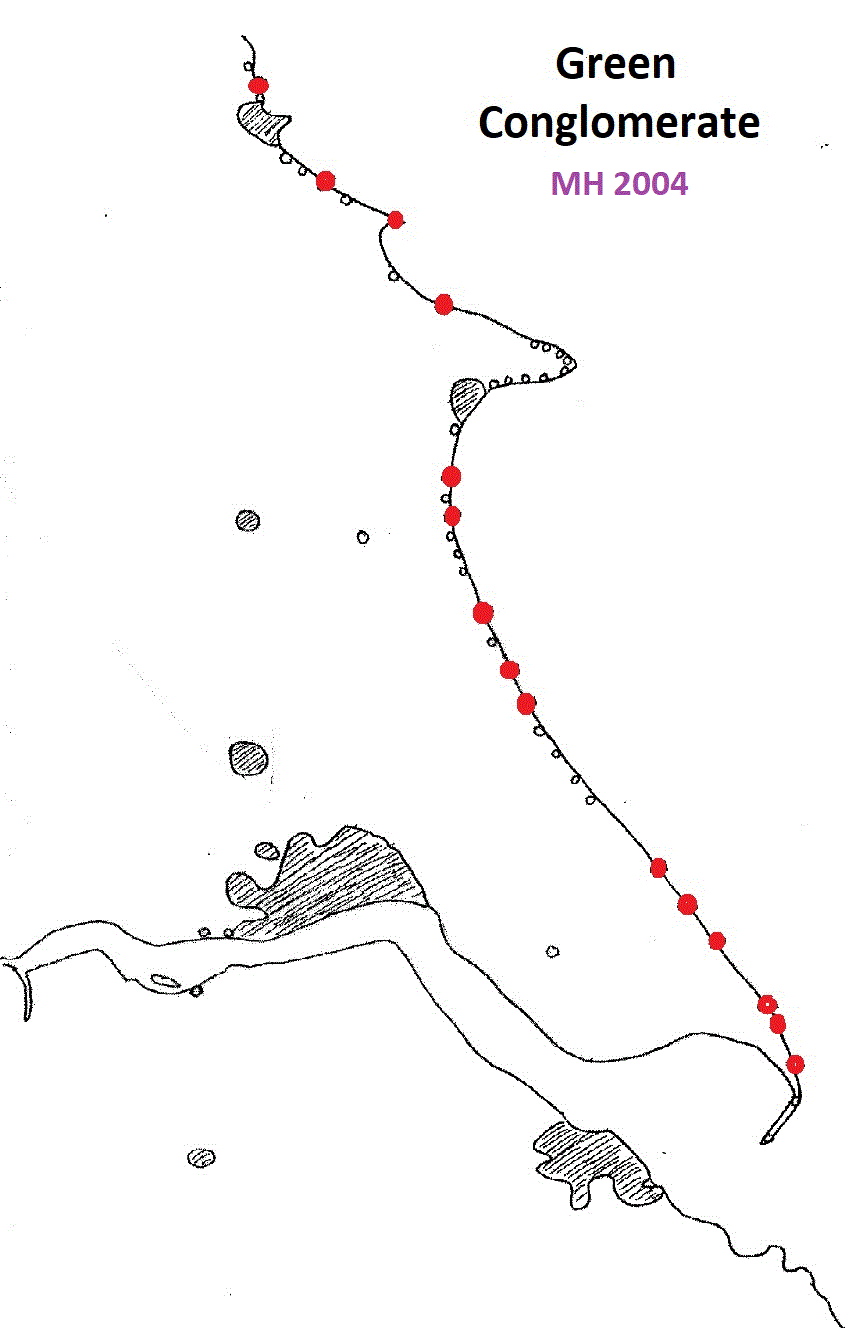
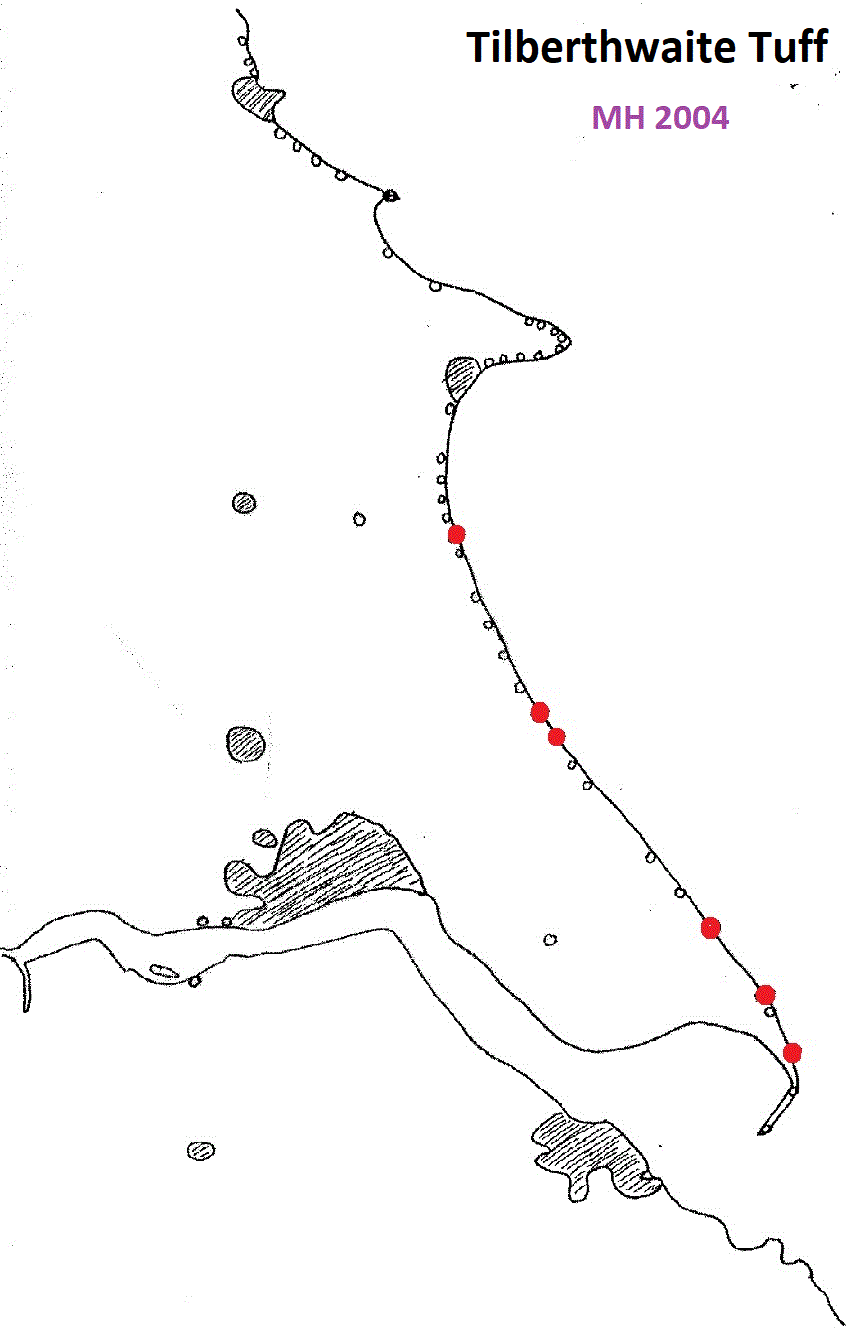
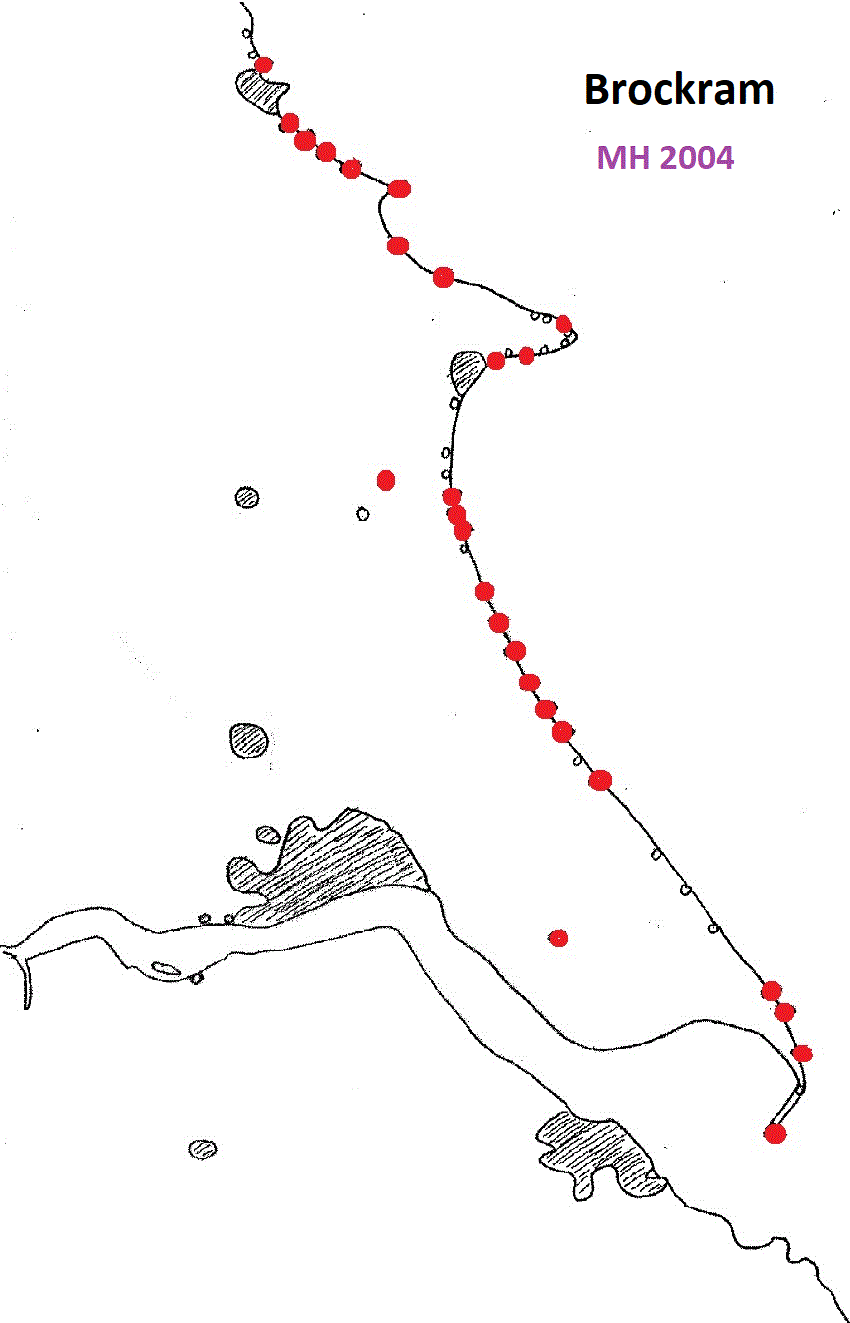
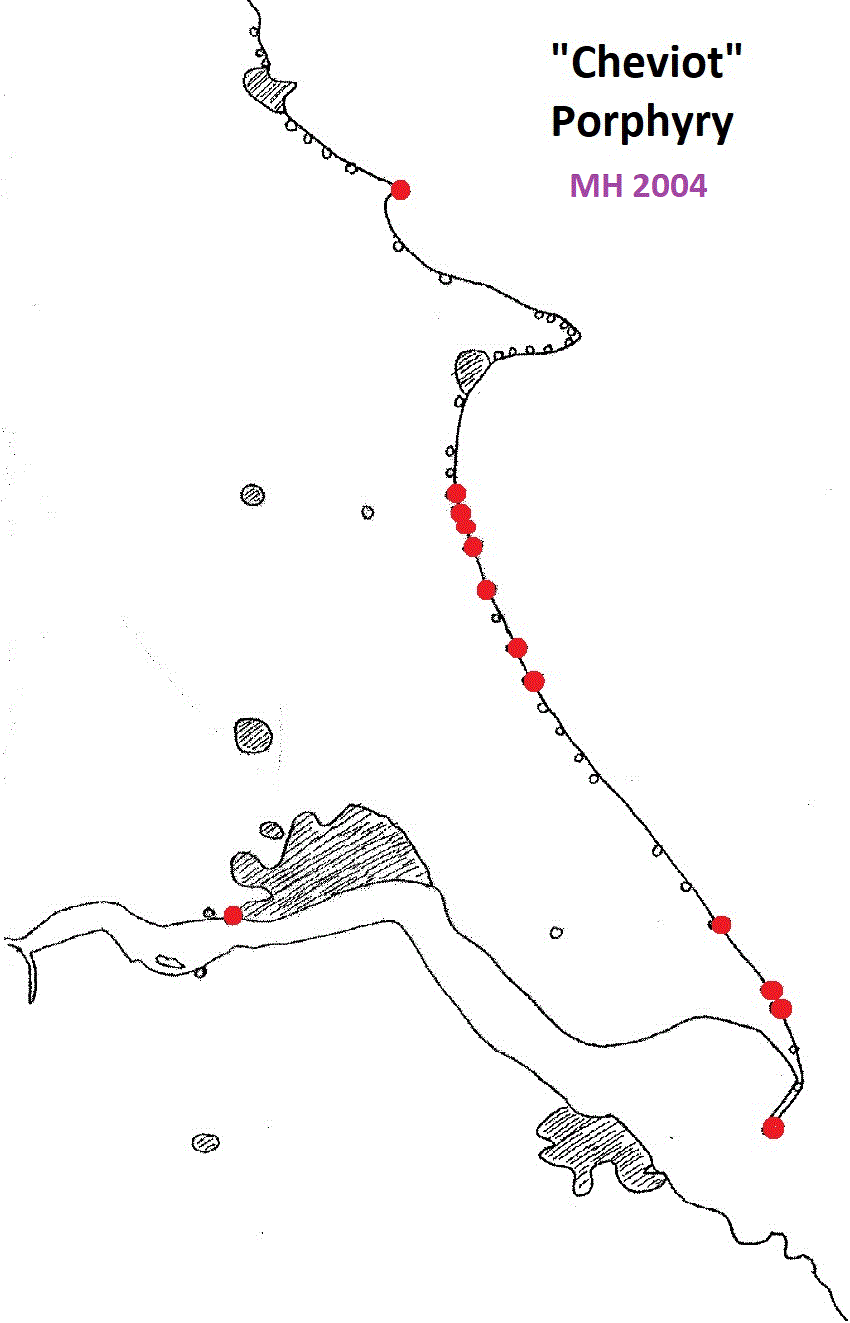

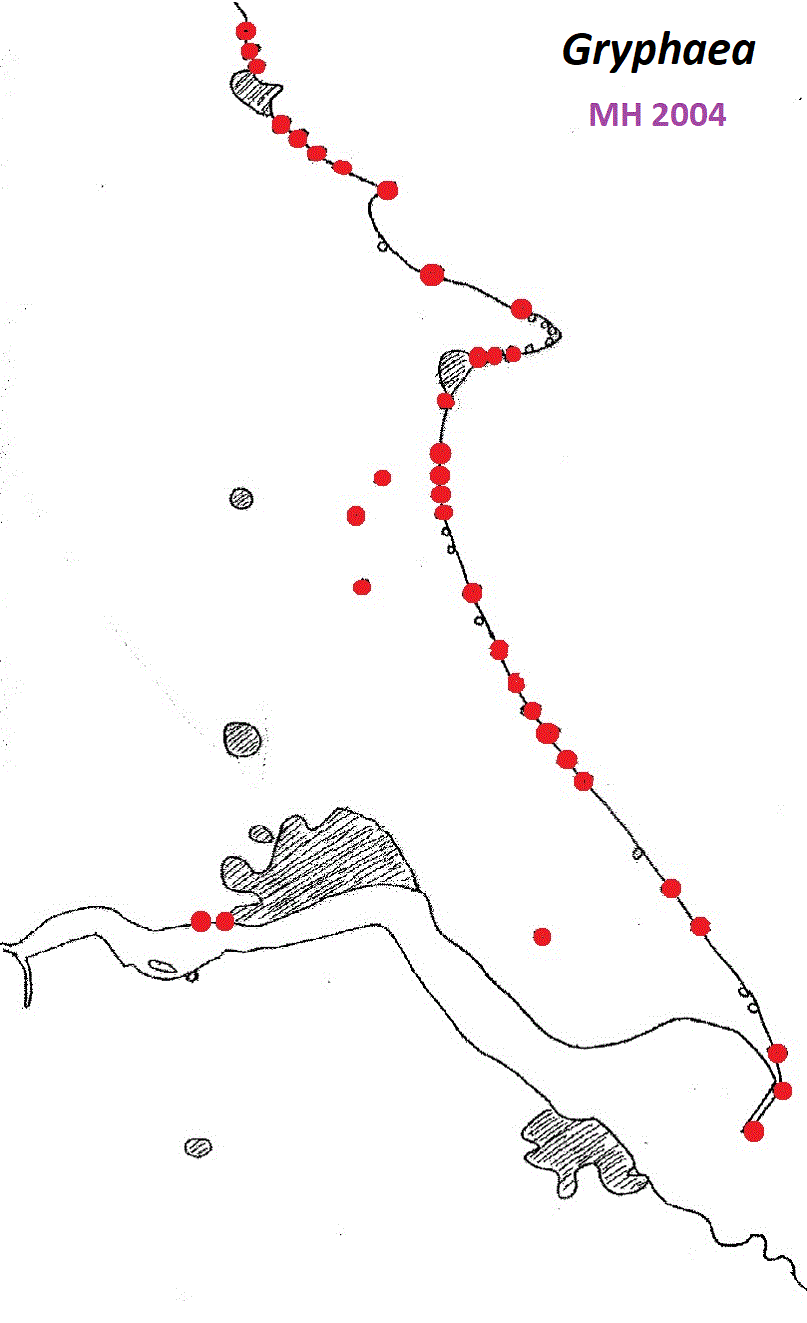
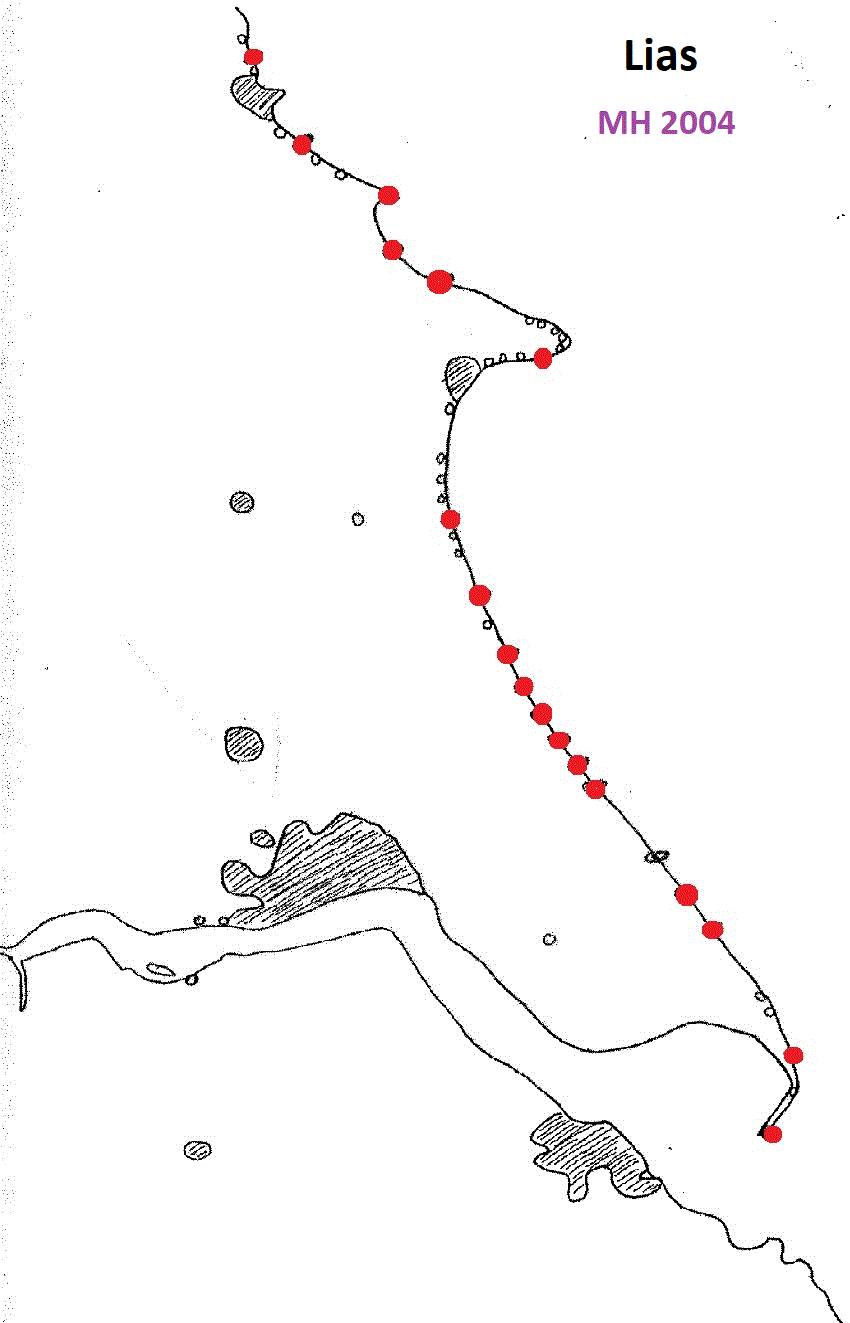
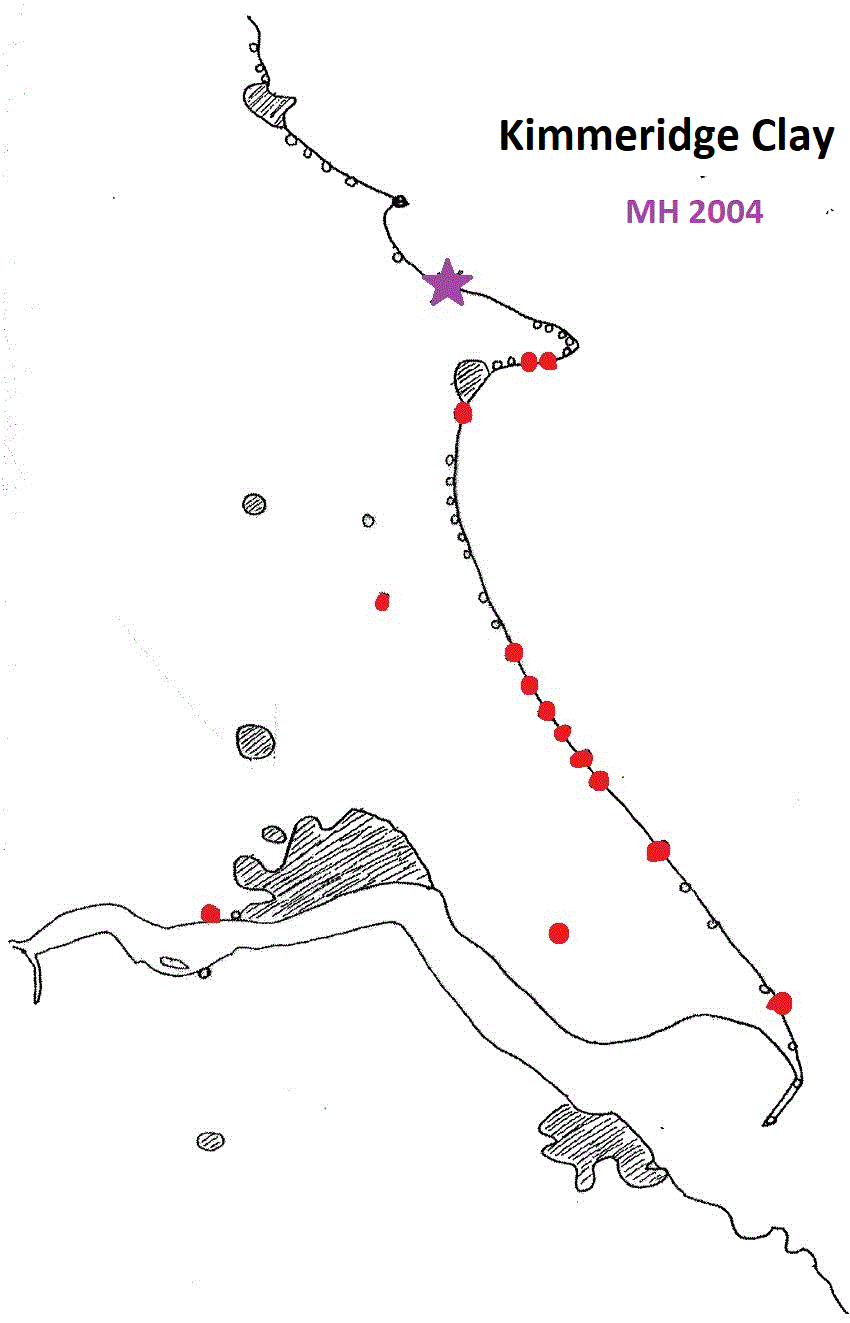
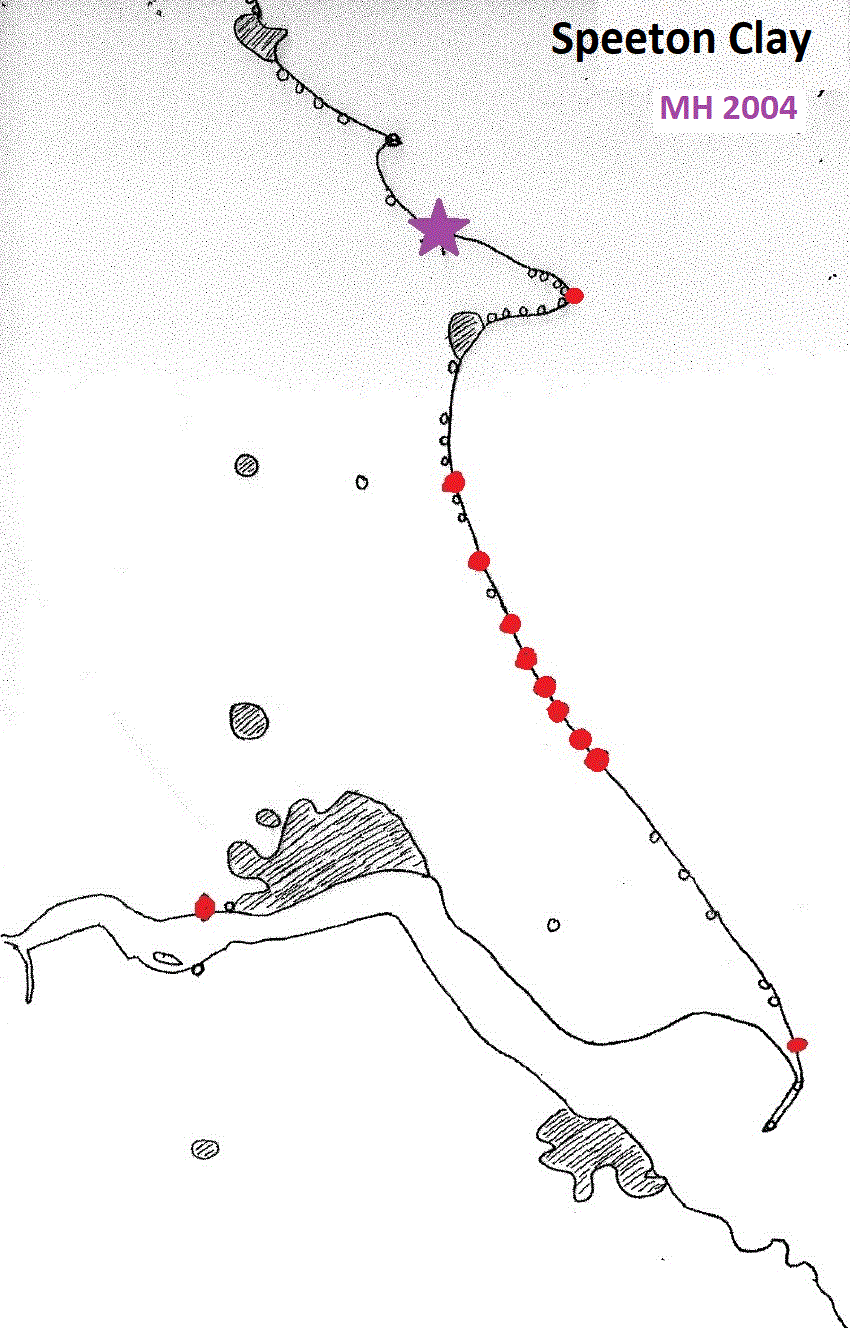
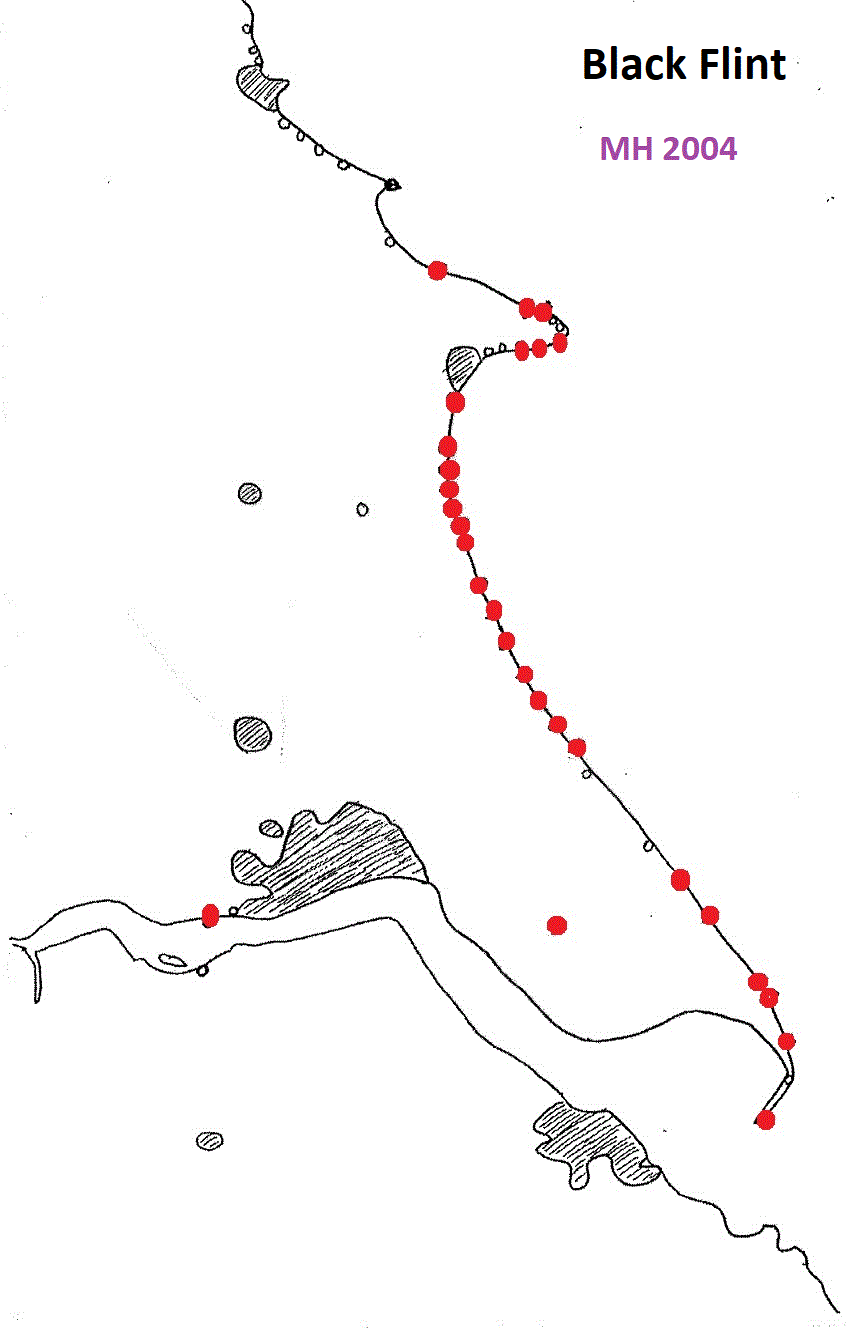
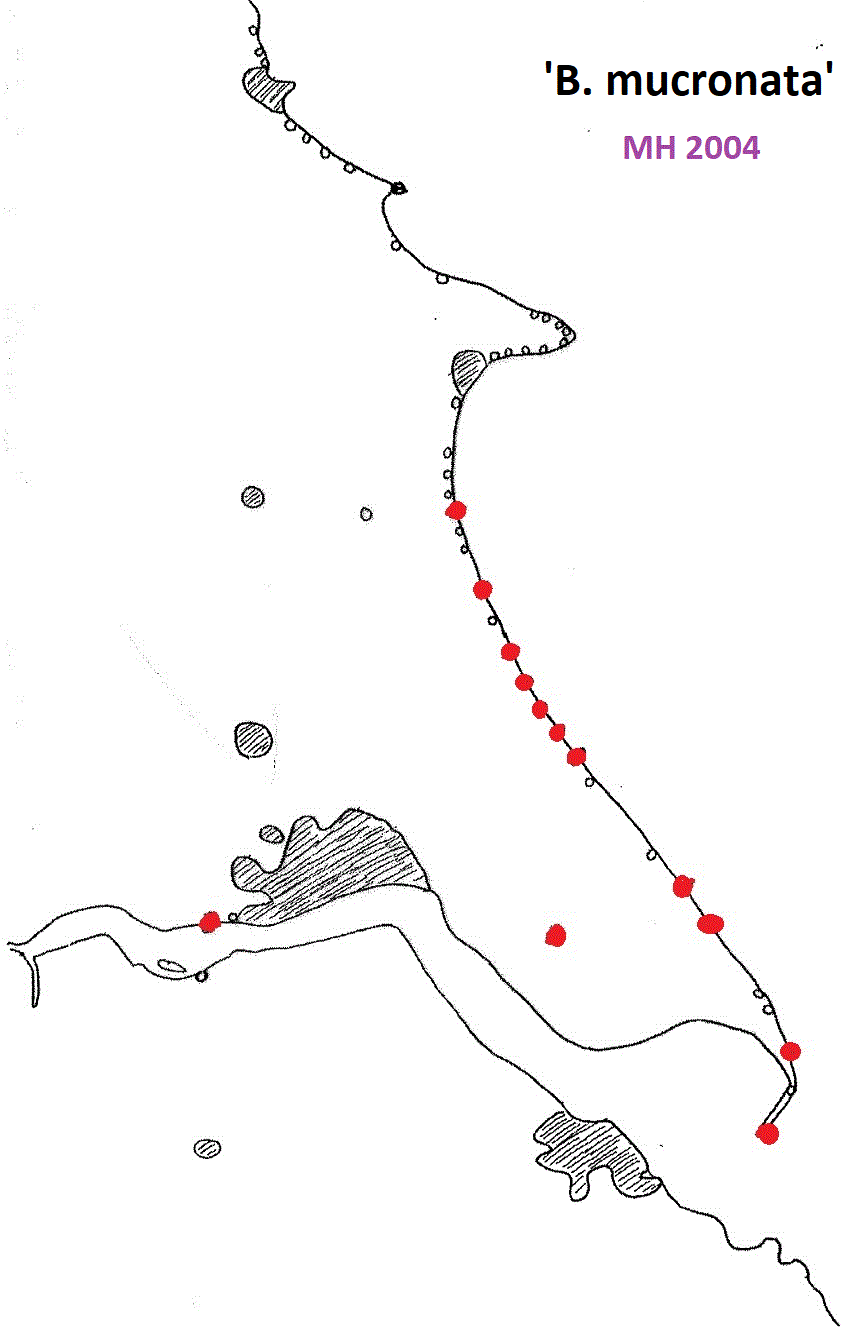
There appears to be a pattern for the distribution of some erratics. Some
seem to be more abundant in areas where there is Withernsea Till generally
present in Holderness, such as Cannon Ball Limestone, Kimmeridge Clay and Speeton Clay.
B. mucronata seems to have a similar
distribution, but this may be due to “rafts” of soft chalk incorporated into the
till or a sub-crop beneath the tills. Others seem to be less abundant in those
areas: Cheviot Porphyry, Brockram, Green Conglomerate and Tilberthwaite Tuff.
References -
Harrison R & M Horne 1992, The East Riding Boulder Committee, reports for the years
1987 to 1991. Humberside Geologist 10, 18-22.
Horne M
2000. Report of the East Riding Boulder Committee 1992 to 2000. Humberside
Geologist 13, 42-45.
Horne M
2004. The distribution of glacial erratics on the Holderness Coast. [abstract] Yorkshire
Geological Society Circular no 519, 6.
Horne M
2006. Report of the East Riding Boulder Committee 2001 to 2004. Humberside
Geologist 14, 92-97.
Horne M
2021 (in press). The scientific study of glacial erratics.
Acknowledgements
– I thank David Hill, Mary Howard, Paul Hildreth and Rodger Connell for useful suggestions at
the editing stage.
*Mike Horne FGS, Honorary Fellow, Department of Geography,
Geology and Environment, University of Hull, Cottingham Road, Hull, HU6 7RX.
Appendix –
List of localities
Burniston
Scalby Bay
Scalby
South Bay Scarborough
Carnelian Bay north
Carnelian Bay south
Osgodby Point
Cayton Bay north
Cayton Bay south
Filey Bay
Speeton
Thornwick Bay
North Landing
Stottle Bank
Selwicks Bay
High Stacks
South Landing to High Stacks
South Landing
South Landing to Danes Dyke
Danes Dyke
Danes Dyke to Sewerby
Sewerby Steps
Sewerby to Bridlington
South Bay Bridlington
Fraisthorpe
Barmston going north
Barmston
Barmston going south
Ulrome
Skipsea
Skirlington
Atwick going north
Atwick
Hornsea going north
Hornsea
Hornsea to Mappleton
Mappleton
Cowden
Aldborough going north
Aldborough
Aldborough going south
Ringborough going north
Withernsea
Holmpton
Dimlington
Easington
Kilnsea
Spurn
Spurn Point
Hessle foreshore
North Ferriby foreshore
South Ferriby foreshore
copyright Hull Geological Society 2021